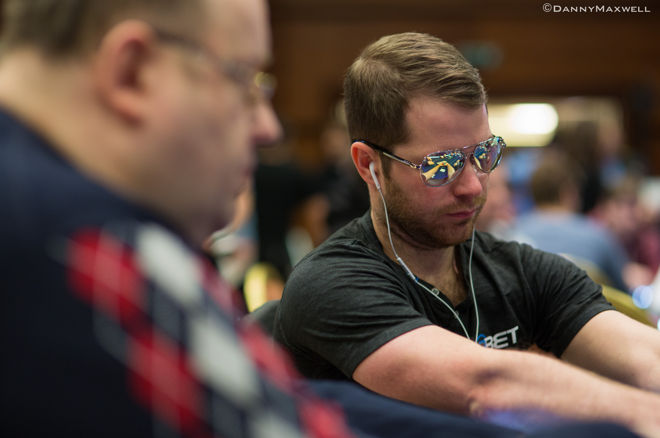Taking Advantage of Tight-Passive Short Stacks in Tournaments

This week I’m sharing a hand from a $1,500 buy-in World Series of Poker event from last summer. This one comes from relatively early in the tournament and finds me playing from the button against two players in the blinds who were both generally tight and passive.
As I mention at the start of the video, being tight and passive and playing a very straightforward game is not typically the way to win at poker. Playing such a style prevents you from winning by stealing pots that don’t belong to you, and it also prevents you from getting full value when you do pick up those good hands. That’s a couple of reasons why just folding and waiting for good hands is generally not a recommended strategy.
When playing against tight-passive players like these, you should raise from late position with a wide range of hands as I do here from the button with 8♣6♠. In this hand, even after the tiny-stacked player in the big blind called my initial raise and then checked the flop (which I missed), I decided to make a relatively small continuation bet.
It is important to recognize when you do not need to make a “normal”-sized bet. In this situation, if my opponent has any piece of the board, he is not going to fold to my continuation bet. But if he missed the flop, he is going to fold to any bet.
By betting smaller, I save chips when my opponent happens to have connected with the board. A penny saved is a penny earned.
Take a look and see how the hand played out:
How would you have played this hand? Let me know your thoughts in a comment below.
Jonathan Little is a professional poker player and author with over $6,200,000 in live tournament earnings. He writes a weekly educational blog and hosts a podcast at JonathanLittlePoker.com. You can follow him on Twitter @JonathanLittle.
Want to stay atop all the latest in the poker world? If so, make sure to get PokerNews updates on your social media outlets. Follow us on Twitter and find us on both Facebook and Google+!









